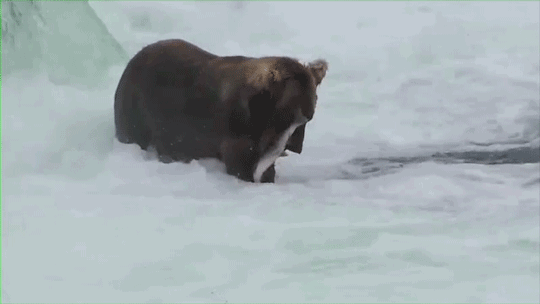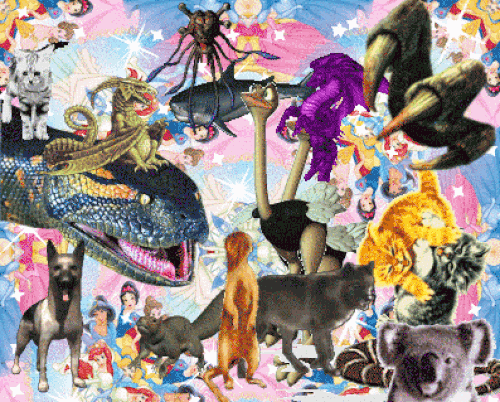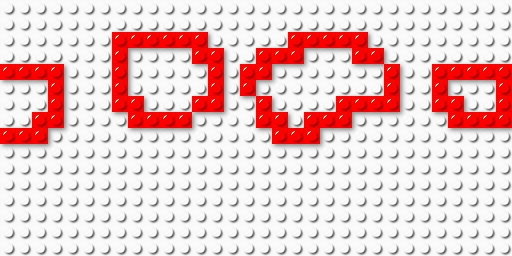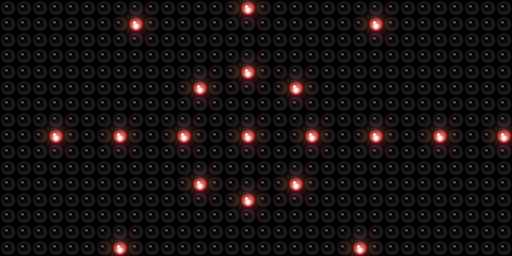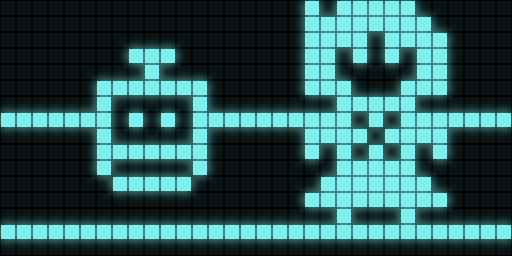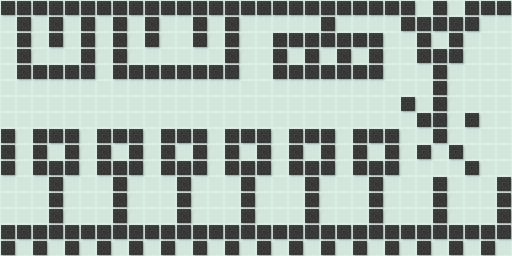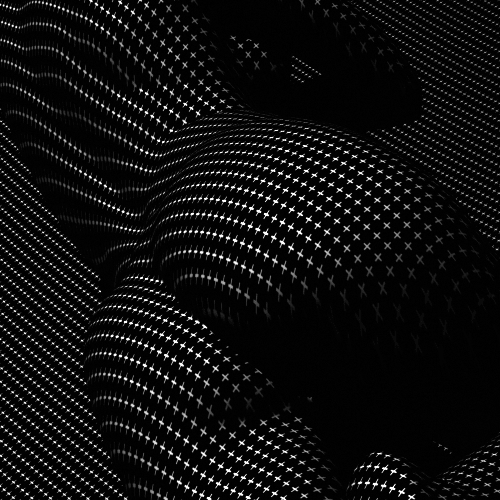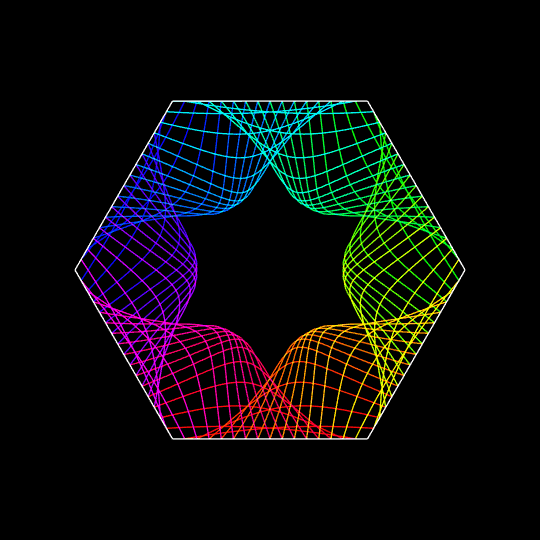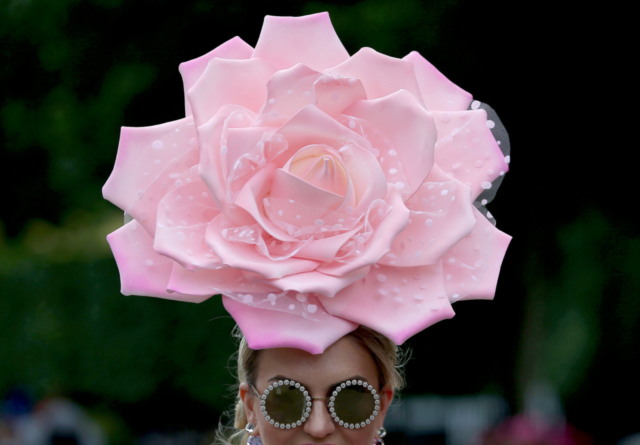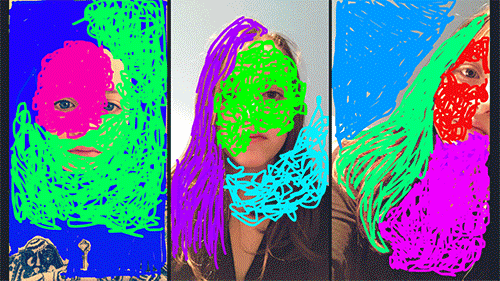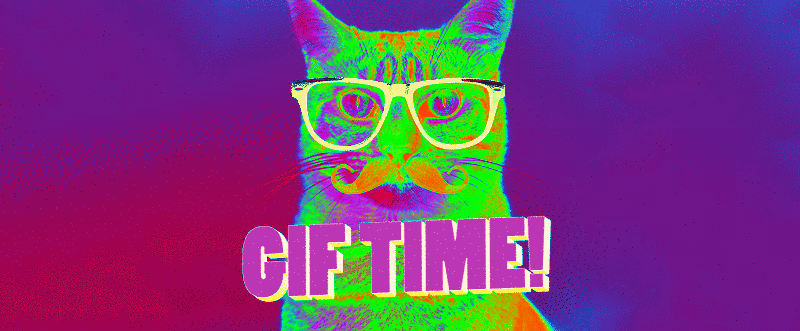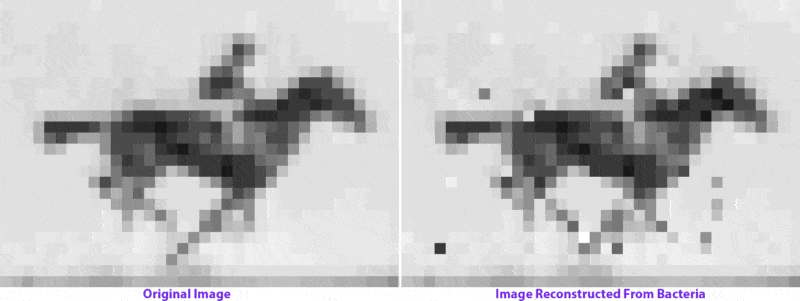
DNA is the hereditary material in humans and is also it turns out a great medium for archiving data and, um, making animated GIFs. The goal of scientists isn’t to make a bunch of short looped movies, though, but to one day use DNA as a biological recorder that will keep track of cells and changes in the environment. It just happens that the GIFs are a great way to demonstrate the idea.
How does all this work? Think of the units of DNA—it’s As, Cs, Ts, and Gs, as computer bits storing small units of information. Basically, bacteria already use proteins to grab pieces of DNA from viruses and insert it into their genomes as a defense against future attacks. Since the proteins always insert new genetic material upstream from old genetic material you end up with a timeline of DNA sequences. It reminds us a bit of blockchain authentication for provenance, (but with a slightly higher error ratio.)
How the GIFs get made is a bit more complicated, so we’re going to leave the explanation to the experts at Gizmodo. An excerpt:
The researchers first tested storing an image of a hand using DNA by converting color and pixel information into sets of base pairs, those As, Ts, Cs, and Gs. This is kind of like the way that genes code for proteins in DNA, but in this custom DNA they built, the A, C, T, G sequences correspond to barcodes that determine which pixels should take on which color. Then, they introduced their custom sequences into a population of E. coli bacteria, creating temporary pores in the cells’ membranes with electric pulses. The translated data enters into the bacteria, which integrate it into their genome using their Cas proteins. The team then grows the bacterial population, which they then sequence, reading the DNA, and translate, recreating the image.
Encoding a GIF into the bacteria was a more complicated process—even though the bacteria store the data in chronological order, the GIF information gets scattered among lots of cells. The researchers can only recover the information on the ordering of frames from single cells, according to the paper. That means recreating the movie required comparing the DNA from lots of different cells. Here’s the GIF before the insertion into the bacteria and the reconstruction.
There are limitations that come alongside working with a living data storage system, said Shipman. The scientists are trying to pull a lot of information out of these cells, which can lead to dead pixels or errors—they could reproduce the GIF with 90 percent accuracy, not perfectly. Additionally, given their methods, the more cells they read back, the more accurate their GIF was; they needed to come up with a reasonable place to stop. Here’s how the hand reconstruction got better over time:
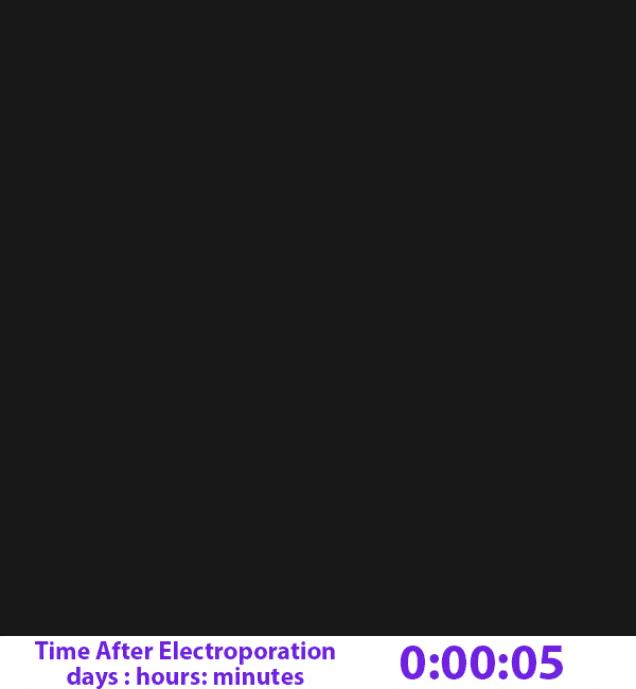
Read more about this at Gizmodo
here.
